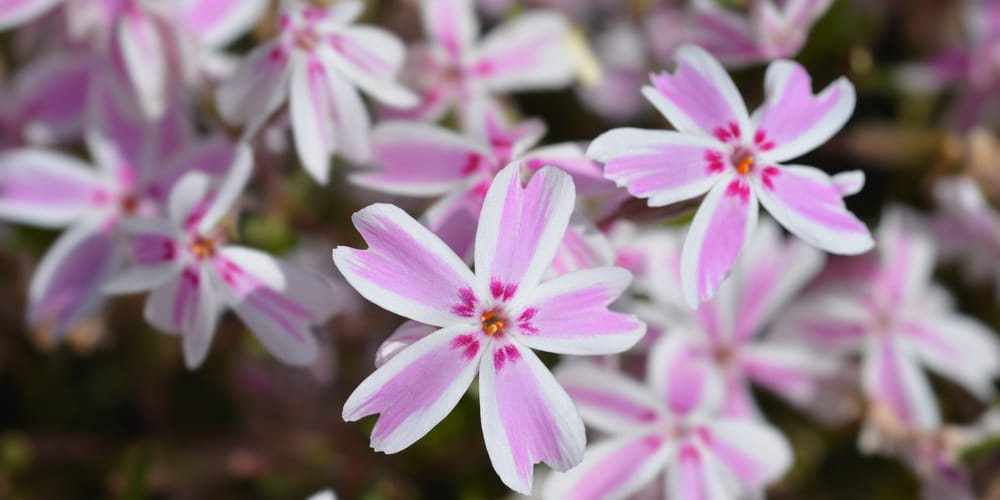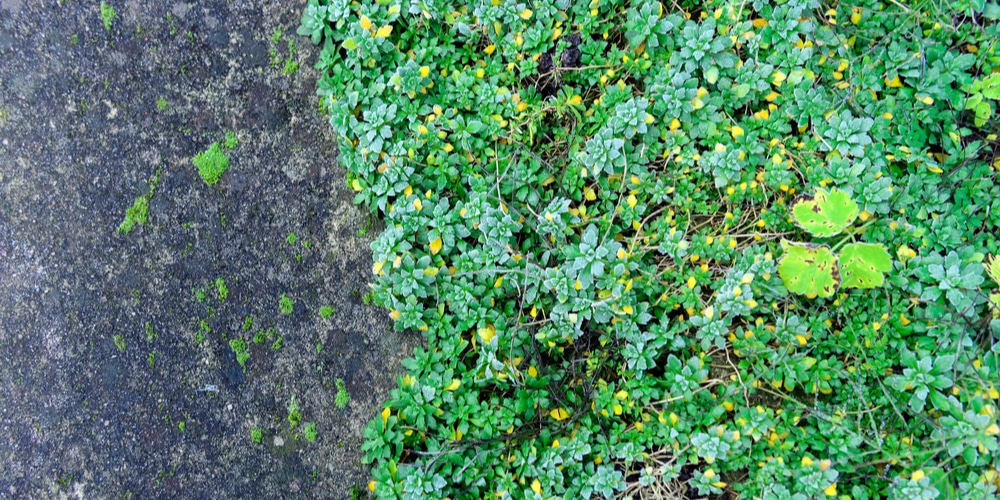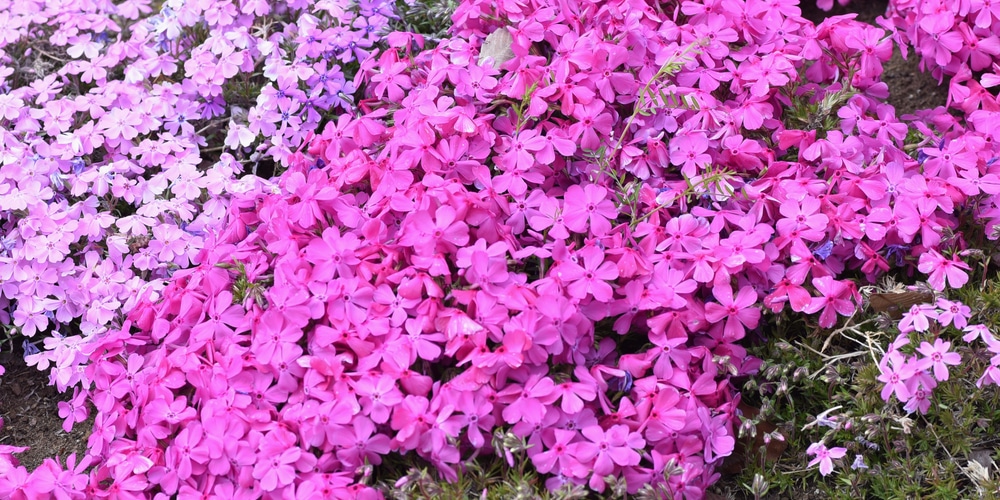Creeping phlox is a delicate, low-growing wildflower that can be found in wooded areas across the United States. The small flowers have five petals and come in shades of blue, white, and pink. You may be wondering, ‘how quickly does creeping phlox spread?’
This plant is often described as a fast-growing ground cover, this plant is a popular choice for gardeners because it’s easy to grow and propagate. Additionally, it’s also deer resistant making it an excellent choice for landscaping projects in rural areas.
However, before you add creeping phlox to your garden, it’s important to understand how quickly this plant spreads and what kind of maintenance is required to keep it looking its best. Creeping phlox can spread rapidly, especially in areas with loose, sandy soil.
While this could mean it’s a good thing for those who are growing it for ground cover, it also means that this plant can easily become invasive. The thick mat of foliage can easily smother other plants in the garden and creep into areas where it’s not welcome.
If you’re not careful, this plant can quickly take over your garden and crowd out other plants. Additionally, the stems of this plant are very fragile and can easily be damaged by lawn mowers or foot traffic.
To avoid these problems, it’s important to give creeping phlox plenty of space to spread and to keep an eye on it so that it doesn’t become invasive.
How Quickly Does Creeping Phlox Grow and Spread?
Throughout its lifespan, this favorite groundcover will grow and spread quickly. Native to the southern United States, this plant produces a stunning carpet of blooms in early spring. It is commonly found growing in woodlands and rocky hillsides.
Creeping phlox typically grows to be 6-12 inches tall and spreads 12-24 inches wide. It is a fast-growing plant, so it won’t take long to cover a large area.
It takes approximately 2 years to reach its full growth potential. With its ideal growing conditions, this plant grows an average of one inch per month, making it a fast-spreading groundcover.
Factors Affecting Creeping Phlox Growth and Spread
With the plant’s cheerful blooms and vigorous growth habits, creeping phlox will cover any bare spot in your yard. However, there are a few things that can affect its growth.
Climate
Climate is the most important factor influencing the growth of the creeping phlox. It thrives in sunny areas with well-drained soil but can tolerate partial shade. During the winter, it becomes dormant once the temperature reaches freezing.
Despite its need for full sun, this plant can’t tolerate hot, humid summers. It’s vital to plant creeping phlox in an area that gets afternoon shade in the summer to prevent the foliage from scorching.
Soil Quality
This plant prefers well-drained, sandy soil with a pH level of neutral to slightly alkaline. It’s important to make sure the soil is not too rich before planting. Rich soil could cause the plant to become leggy and produce fewer blooms.
Watering Schedule
While creeping phlox is drought tolerant, it’s important to water it regularly during its first growing season.
Once it’s established, you can cut back on watering. This plant does not like to sit in wet soil, so make sure the ground is dry before you water it again.
Fertilizer
You don’t need to fertilize creeping phlox unless the soil is poor. If you do decide to fertilize, use a slow-release fertilizer or organic compost in the spring.
Creeping Phlox Maintenance
Throughout the plant’s lifespan, it keeps its compact shape without needing to be trimmed. As soon as it reaches its 6-inch maturity height, it will start to creep along the ground, filling in any gaps.
Deadhead
Creeping phlox is a cheerful spring-flowering groundcover that lights up the landscape with a carpet of color. This low-maintenance plant is easy to grow and care for, making it a popular choice for beginner gardeners.
One of the key ways to keep creeping phlox looking its best is to deadhead the flowers.
This simple task involves removing spent blooms from the plant. Deadheading not only keeps the plant looking tidy but also encourages new growth. To deadhead, simply snip off the faded flowers at the base of the stem.
Be sure to use sharp shears or scissors to avoid damaging the plant.
Pruning
While deadheading is the only regular maintenance required, you may need to give creeping phlox a light pruning in late spring or early summer.
This will help control its spread and keep it neat and tidy. Simply trim back the stems by a few inches. Doing so ensures that the plant stays full and doesn’t become leggy.
Weeding
Since creeping phlox spreads quickly, it can easily crowd out other plants in your garden. To prevent this from happening, be sure to pull up any weeds that sprout up around the plant.
Lawnmowers aren’t the best choice for this task since they can damage the plant’s roots. Instead, use a hoe or your hands to weed around creeping phlox.
Pests and Diseases
Creeping phlox is generally a healthy plant that isn’t susceptible to many pests or diseases. However, it can be affected by powdery mildew, rust, and leaf spot.
These problems are usually caused by too much moisture. To prevent them, make sure the plant has enough air flow and avoid watering it from above.
Aphids, mites, and beetles may also attack the plant. These pests can be controlled with insecticidal soap or neem oil. If you notice any problems, be sure to act quickly before they spread.
How quickly does creeping phlox spread: Final Thoughts
Creeping phlox is a beautiful, low-maintenance plant perfect for adding color to your landscape. It relatively grows and spreads quickly, taking about 2 years to reach its maturity, with an inch of growth as soon as this plant has been established.
With the proper care, you can enjoy its cheerful blooms for many years to come! Just be sure to deadhead the flowers and give it a light pruning in late spring or early summer.
You may also need to weed around the plant and control any pests that attack it. By following these simple tips, you’ll have no problem keeping your creeping phlox looking its best.
Related Article: Creeping Phlox in Winter


